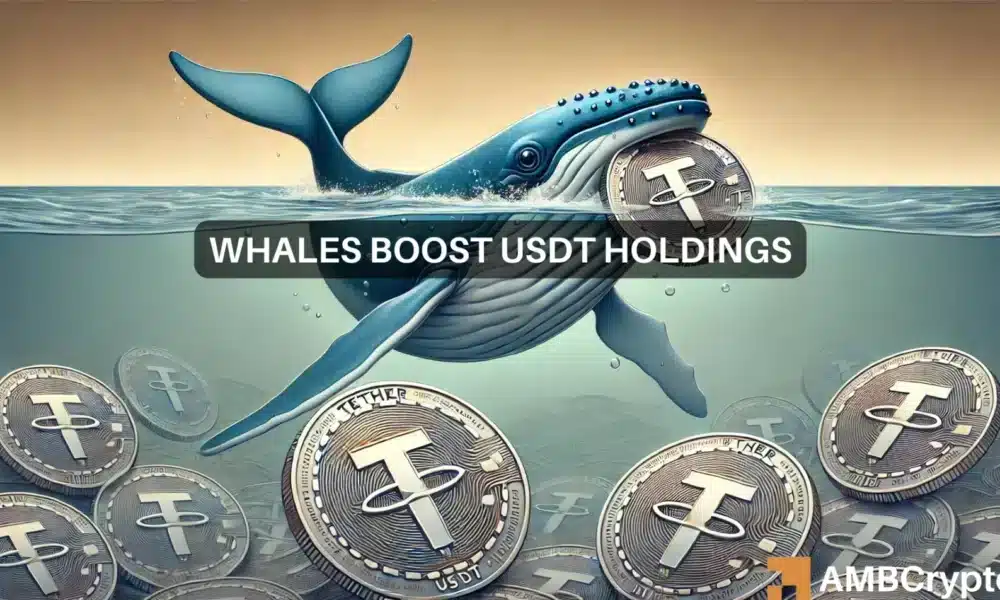Considered as the digital equivalent of the U.S. dollar, Tether (USDT) has maintained a steady value of $1, allowing it to establish itself as a prominent stablecoin.
Previously a niche asset, the demand for USDT has surged significantly, making it a preferred choice for various transactions, ranging from everyday purchases to significant cross-border transfers.
This surge is highlighted by the global supply of stablecoins reaching a milestone of $190 billion, marking a substantial increase of $60 billion since the commencement of 2024.
When it comes to the realm of cryptocurrencies, the interplay between demand and supply takes on a unique significance.
Examining Divergent Perspectives
USDT, recognized as one of the most utilized stablecoins in the crypto market, has often served as a form of security during times of market uncertainty. This trend seems to be recurring at present.
The month of December started off on a robust note, witnessing Bitcoin surpassing the $100,000 mark and hitting a fresh all-time peak of $104,000 within the initial five days. Consequently, the dominance of USDT dropped to a 6-month low of 3.80%.
Despite these positive developments, the uncertainty surrounding the next market peak of Bitcoin has led to increased volatility. Should this trend persist, a growing number of investors may gravitate towards the stability offered by USDT, especially given the bearish MACD crossover that further reinforces this shift.
Moreover, from an economic viewpoint, the increase in supply is driven by the escalating demand.
As the stablecoin supply has reached $190 billion, with $60 billion added this year alone, it is evident that the interest in USDT is rapidly rising, particularly among major market participants.
In November, large investors bolstered their USDT holdings by acquiring over $2 billion in four distinct time frames, further underlining the expanding role of the stablecoin as a hedge against higher-risk assets.
Nonetheless, this could represent only one facet of the situation. The escalating USDT demand does not necessarily signify negative implications for the market. On the contrary, it might indicate the potential for a significant uptrend.
Deciphering the Implications of High USDT Demand: Correction or Rally?
It is evident that two contrasting scenarios are unfolding. Either market participants are offloading USDT in anticipation of a substantial bull market, pushing its supply to new heights, or apprehensions regarding a correction are prompting a rush to hoard USDT as a safe refuge.
An analysis of the aforementioned chart reveals a substantial reduction in USDT holdings by large investors over the past two days—from over $2 billion to a negative $240 million position—signifying a strong belief in potential gains soon.
Conversely, the retail segment seems to be adopting an alternative approach. As seen since the inception of December, there has been a consistent decline in USDT holdings on exchanges, indicated by successive red bars.
In contrast to previous instances where USDT accumulation denoted a positive outlook for Bitcoin, investors might now be turning towards stablecoins as a means of security. The reasons behind this shift are compelling:
Bitcoin’s repeated failures to breach the $100,000 threshold, concerns regarding its overvaluation, and the absence of widespread FOMO are fostering a more cautious investment sentiment.
Therefore, amidst heightened volatility, traders are either pursuing rapid, substantial gains through mid and low-cap tokens or opting for stablecoins as a more secure investment option.

